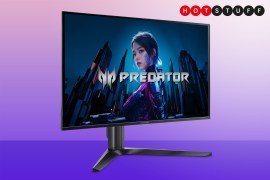I wanted to love Samsung’s Odyssey 3D monitor, but glasses-free 3D still has a long way to go
Limited game support and fiddly software make this a tricky tech showcase to recommend
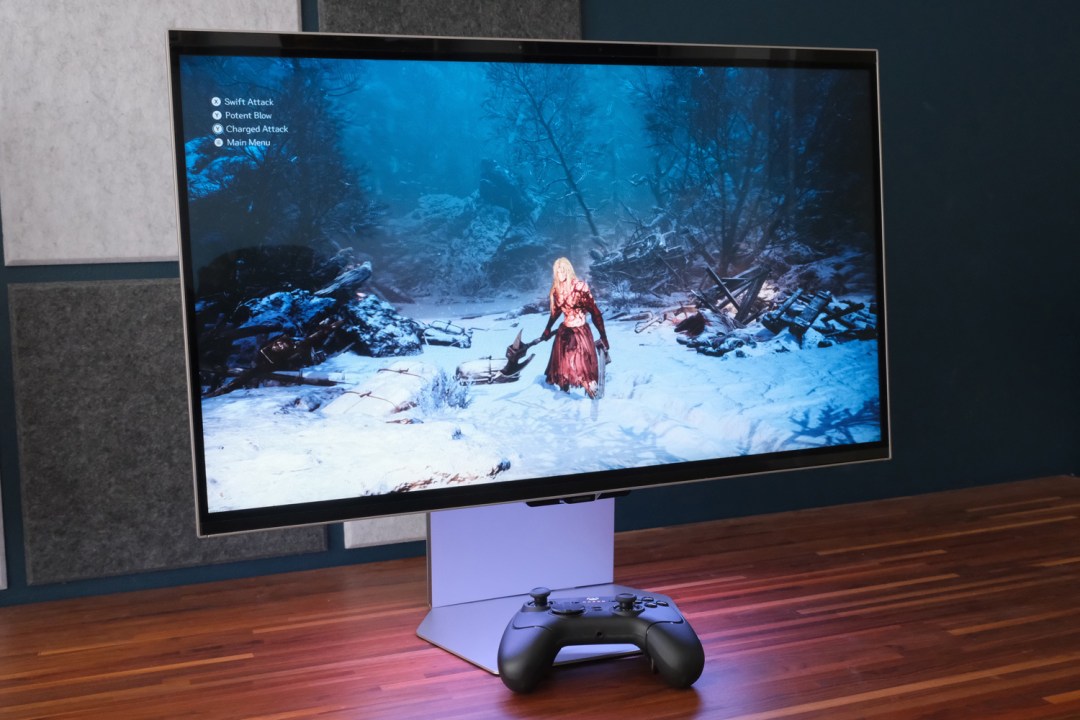
Stuff Verdict
Samsung’s new take on glasses-free 3D isn’t quite ready for prime time just yet. Limited game support and wonky 2D upscaling limit the Odyssey 3D’s appeal, and regular 4K IPS monitors cost way less.
Pros
- Convincing glasses-free 3D images – when the tech works
- Clean, responsive and colourful 2D visuals
- Decent connectivity options
Cons
- Very limited game support
- Companion software is basic at best
- Don’t need 3D? Rivals cost a whole lot less
Introduction
3D is one of those features which – while undeniably cool – seems to bubble to the surface every once in a while, then sink down again just as quickly. I blame having to wear those special glasses. Samsung clearly felt the same, as the $1999/£1899 Odyssey 3D ditches the specs in favour of eye-tracking and lenticular panels.
It’s the latest of a new breed of dimensionally-minded 4K displays aimed at PC gamers, except here Samsung’s Reality Hub software is starting from scratch. Rival Acer’s Spatiallabs tech might be pricier but it’s been doing the rounds for a few years now, and garnered substantial developer support in the process. It’s not like the 27in Odyssey 3D has Samsung’s stunning OLED picture quality to fall back on, either, as it’s using LCD tech underneath. So if depth doesn’t do it for you, the alternatives are substantially cheaper.
Sadly, after two weeks of stumbles, I think the cycle is set to repeat yet again.
How we test gaming hardware
All games consoles and gaming hardware tested on Stuff are put through their paces with days’ worth of play time. We use our years of testing experience to judge areas such as build quality, software experience, battery life and other features. Manufacturers have no visibility on reviews before they appear online, and we never accept payment to feature products.
Find out more about how we test and rate products.
Design & build: eyes up
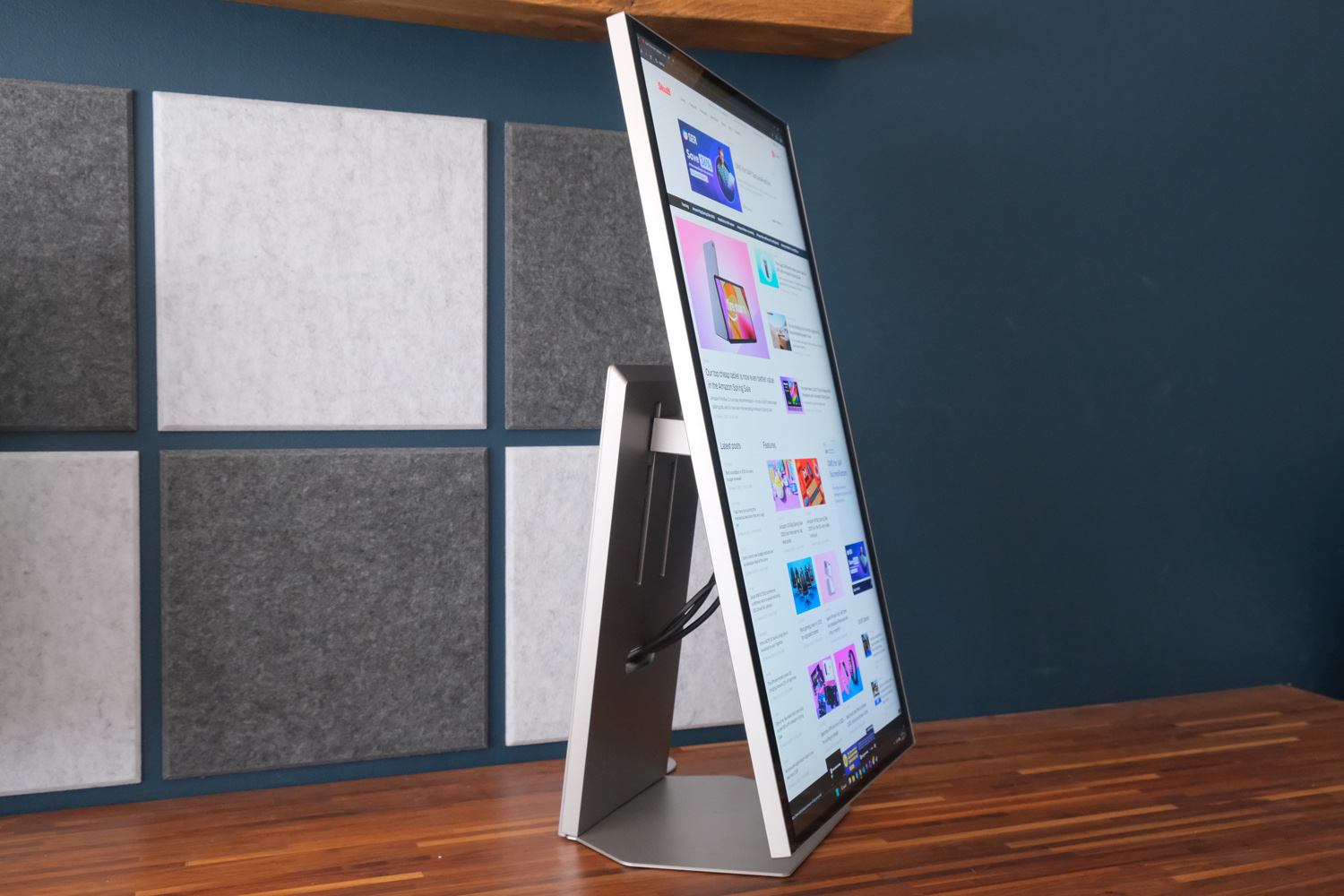
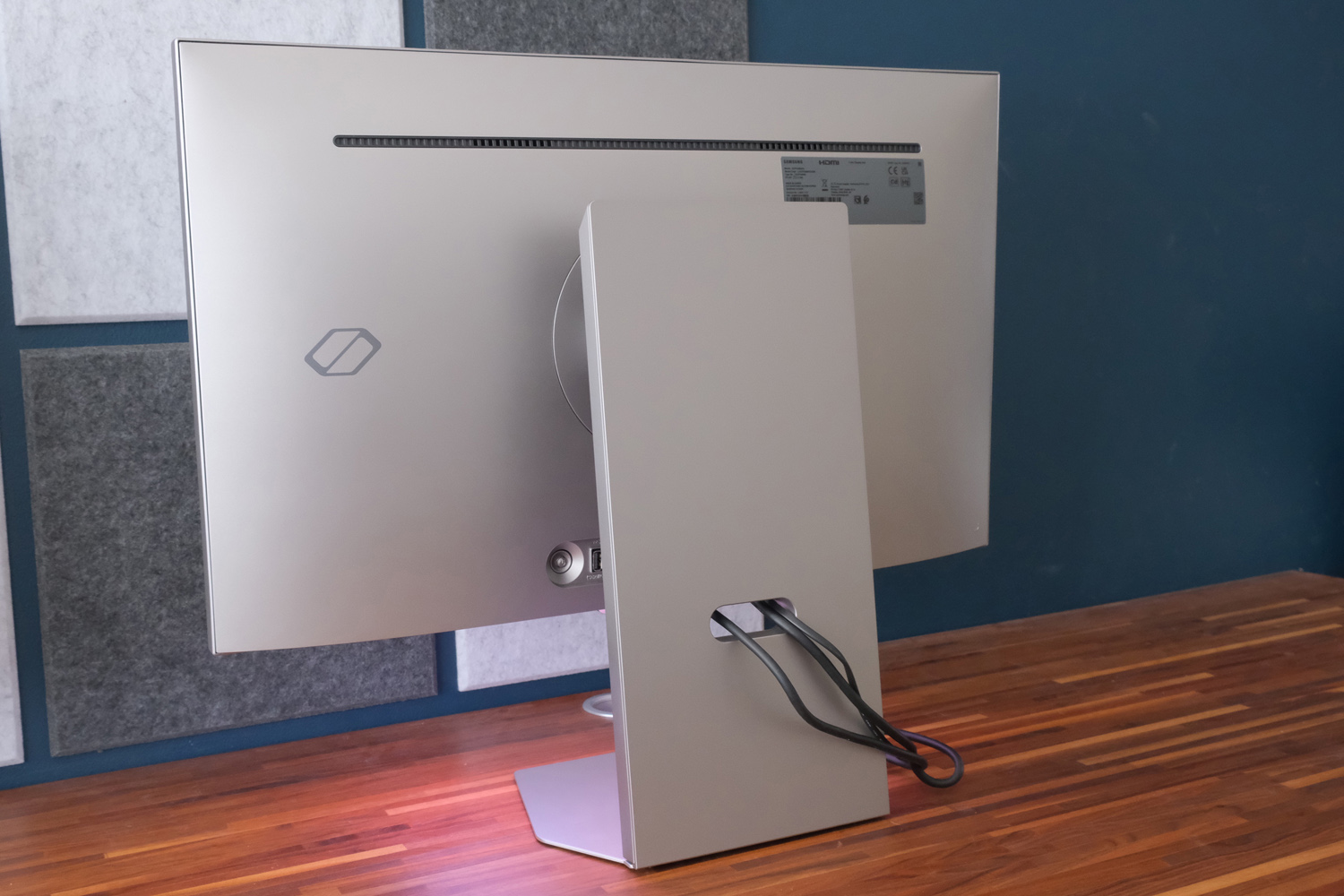
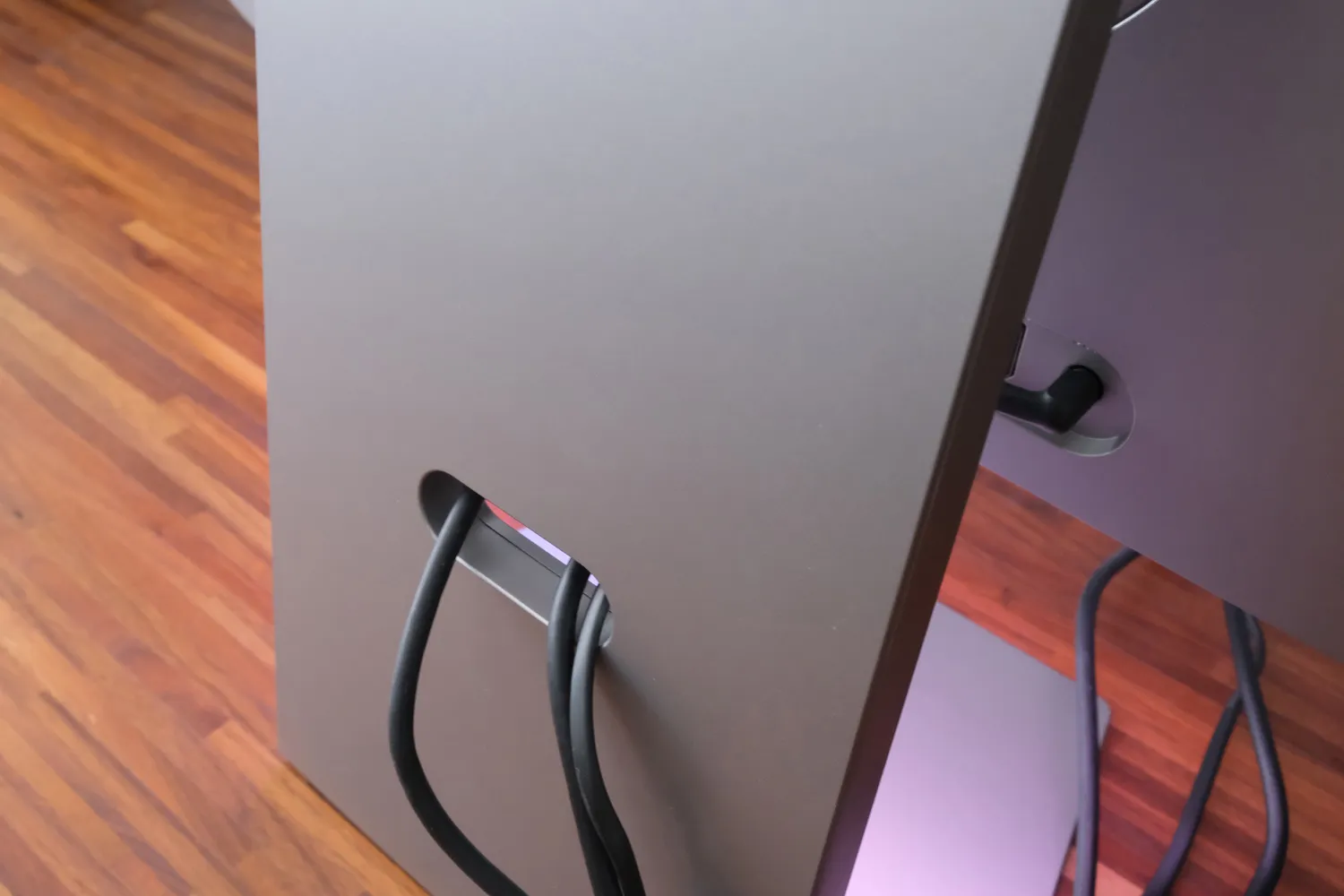
The Odyssey 3D was never going to look as slick as Samsung’s much skinnier OLED monitors; the LCD panel alone takes up more room, and then it had to squeeze in a bunch of eye tracking tech on top. Still, it’s easier on the eyes than most gaming-grade screens. The silver stand has Samsung’s angular hallmarks from the front, even if around back it’s a big flat rectangle rather than a slender central cylinder. It doesn’t eat up a huge amount of desk space, either, which is nice.
The base of the stand is made from metal, but but everything else is plastic, including the silver trim around the panel. I found it less distracting here than on the firm’s recent OLEDs, perhaps because the bezels are that much thicker. They need to be at the top, to leave room for the tracking cameras; having them equally chunky at the bottom feels like an attempt at symmetry.
I appreciate how you don’t need a screwdriver to put the thing together, as well as how much height adjustment and tilt are on offer, and that you can rotate the screen to portrait orientation. There’s no swivel, though. You could use a monitor arm or wall mount instead if you wanted, as it’s VESA compatible.
Cable management is reasonable, with a cutout placed high enough up the stand I couldn’t see any trailing wires with the screen in its highest position. Just keep in mind hooking up the included USB cable isn’t optional here – it’s necessary to get 3D working, as well as to add a few extra USB ports to your gaming setup.
Features & connectivity: out of my depth
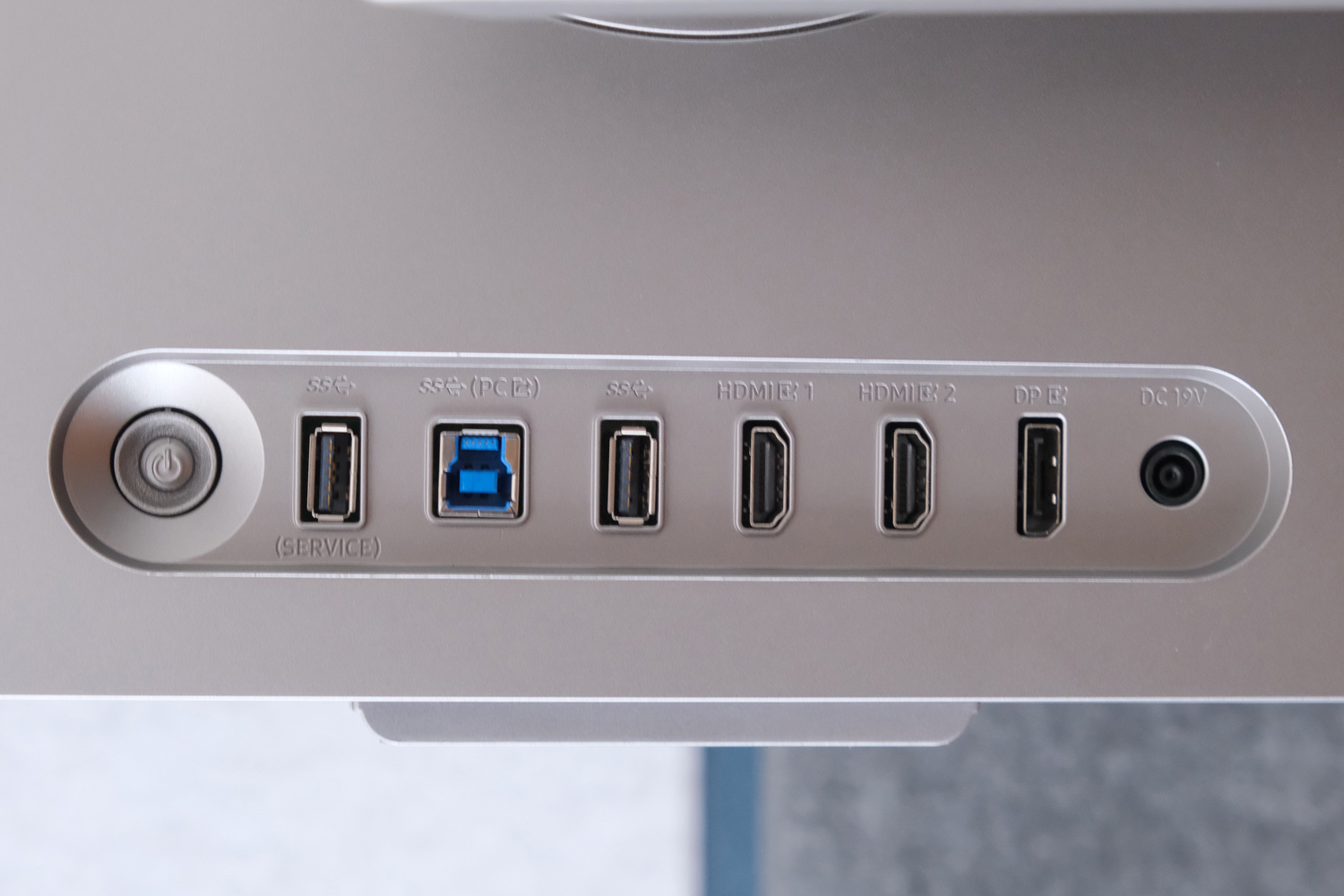
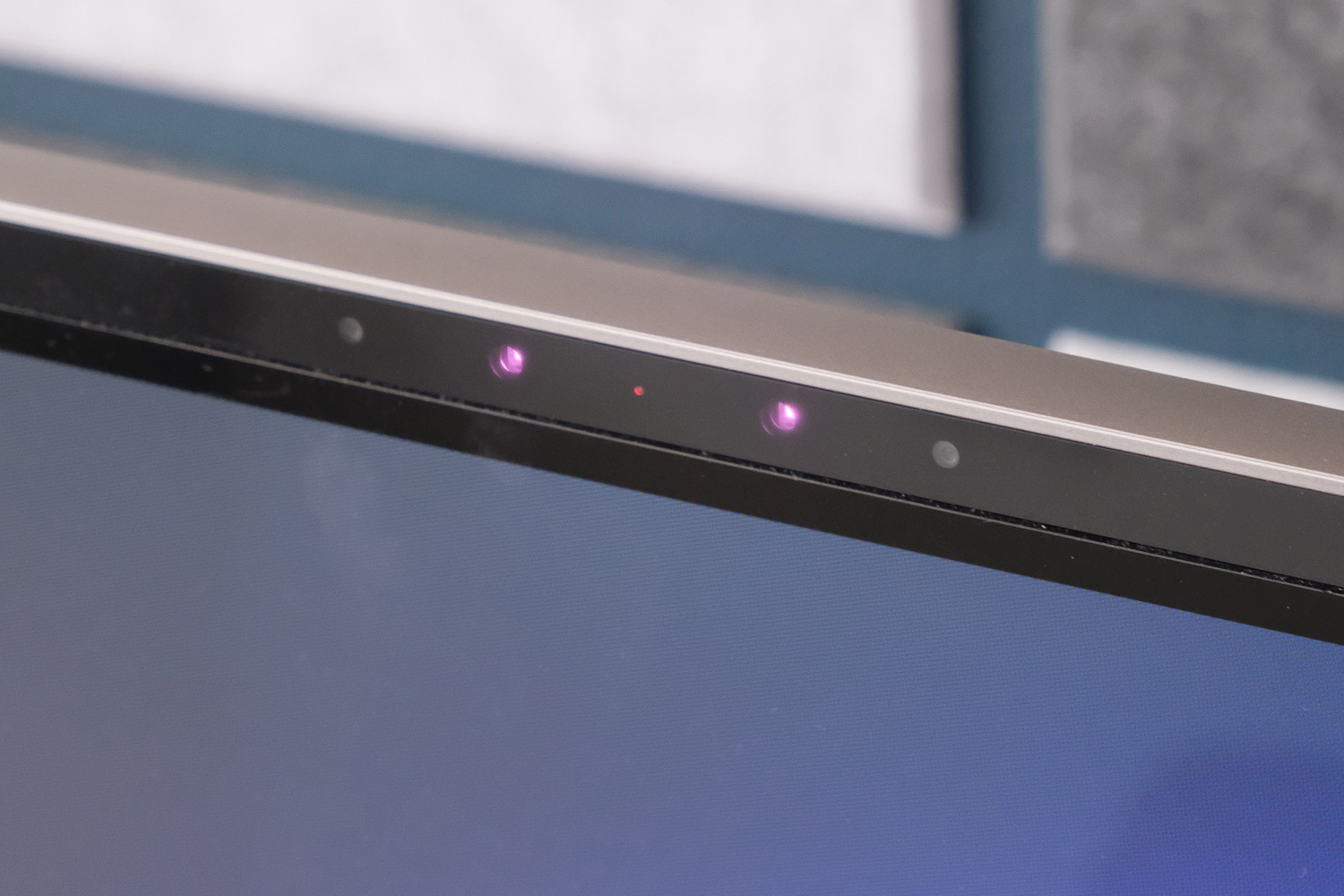
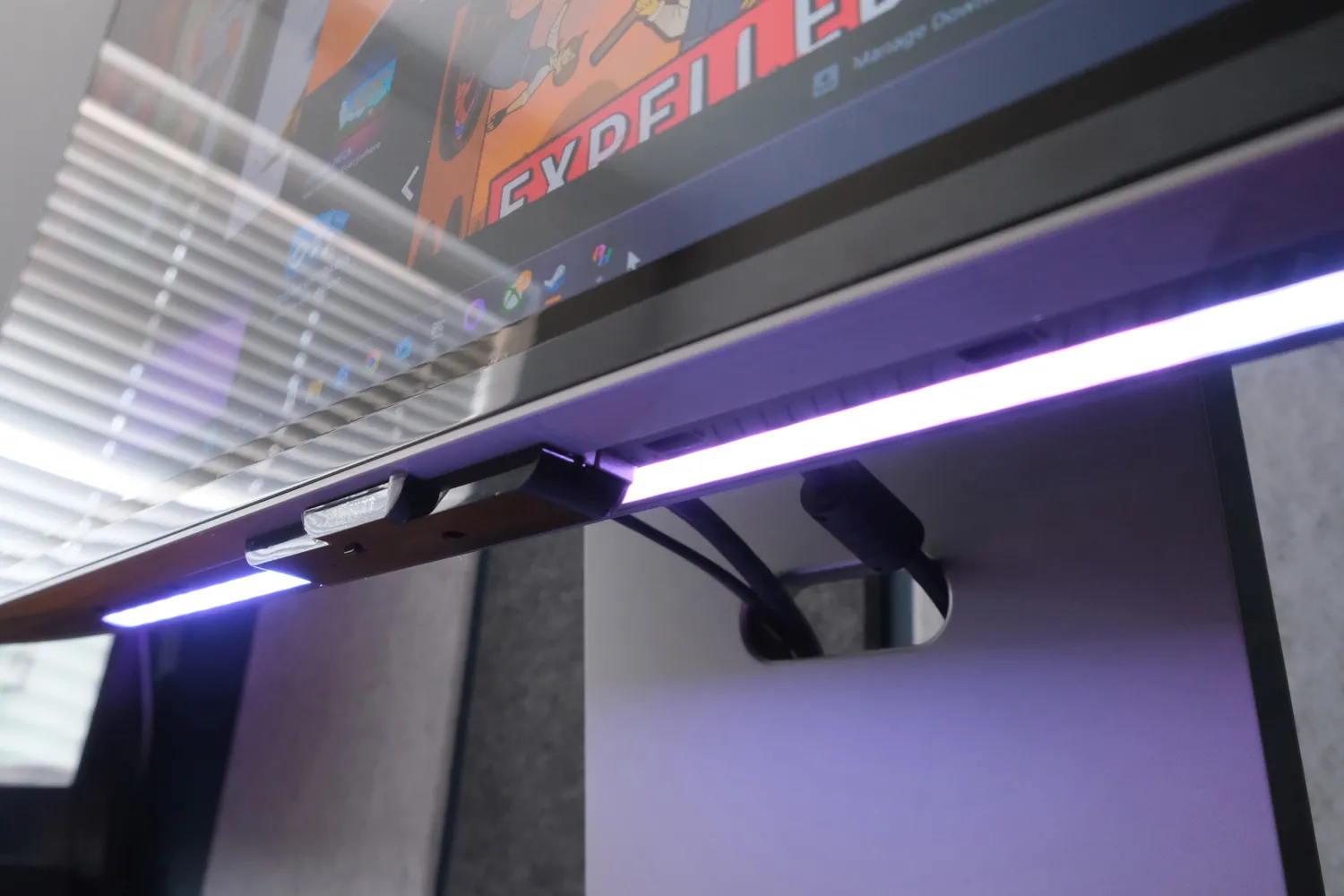
Samsung hasn’t carried over its distinctive Infinity Core lighting from the Odyssey OLED range. The Odyssey 3D gets simpler Edge lighting instead, with a single row of LEDs built into the bottom bezel. They’ve got the usual bunch of basic patterns to pick from, and they shine fairly brightly. I liked the option to react to what’s showing onscreen, like a miniature Philips Ambilight setup, only much simpler.
There’s no 3.5mm headphone port, but you do get a pair of built-in speakers. They’re decent enough, getting fairly loud but lacking much in the way of bass – so basically like every other monitor I’ve tested. Samsung hasn’t gone to nearly as much effort here as Acer has with its Predator SpatialLabs View 27, which has convincing positional audio as well as lenticular 3D visuals.
Other connectivity is pretty standard. You get two USB-A ports in return for wiring the upstream USB connection into your PC. No USB-C passthrough for hooking up a laptop is understandable, given the gaming focus (and restrictions imposed by the 3D functionality). Video is handled by a single DisplayPort and twin HDMIs. AMD FreeSync and Nvidia G-Sync variable refresh are both supported, but at the time of writing only Nvidia GPUs could play nicely with every one of the monitor’s 3D features.
That’s just the first of the Odyssey 3D’s many limitations, too. Samsung recommends an RTX 3080 graphics card as a minimum for 3D gaming, and its 2D video upscaling only applies to full-screen videos. It can’t do DRM-protected files (so 3D Netflix isn’t going to happen) and you’ve got to disable HDR on the Windows desktop unless you want massively washed-out picture.
I hope you didn’t have visions of hooking up a PS5 or Xbox to this screen and playing in 3D; the upscaling is Windows-based, and can’t work its magic on unsupported games. The incredibly short list of compatible titles meant just two were available during my loan period, with the promise Samsung “plans to continuously expand its partnerships with more global game studios” in the future. Reality Hub can’t recognise games with built-in support for side-by-side 3D rendering, like Shadow of the Tomb Raider, either.
Given the price of admission, that’s a pretty weak launch effort – especially considering Acer’s rival SpatialLabs system has well over 100 compatible titles available now.
Interface: reality bites
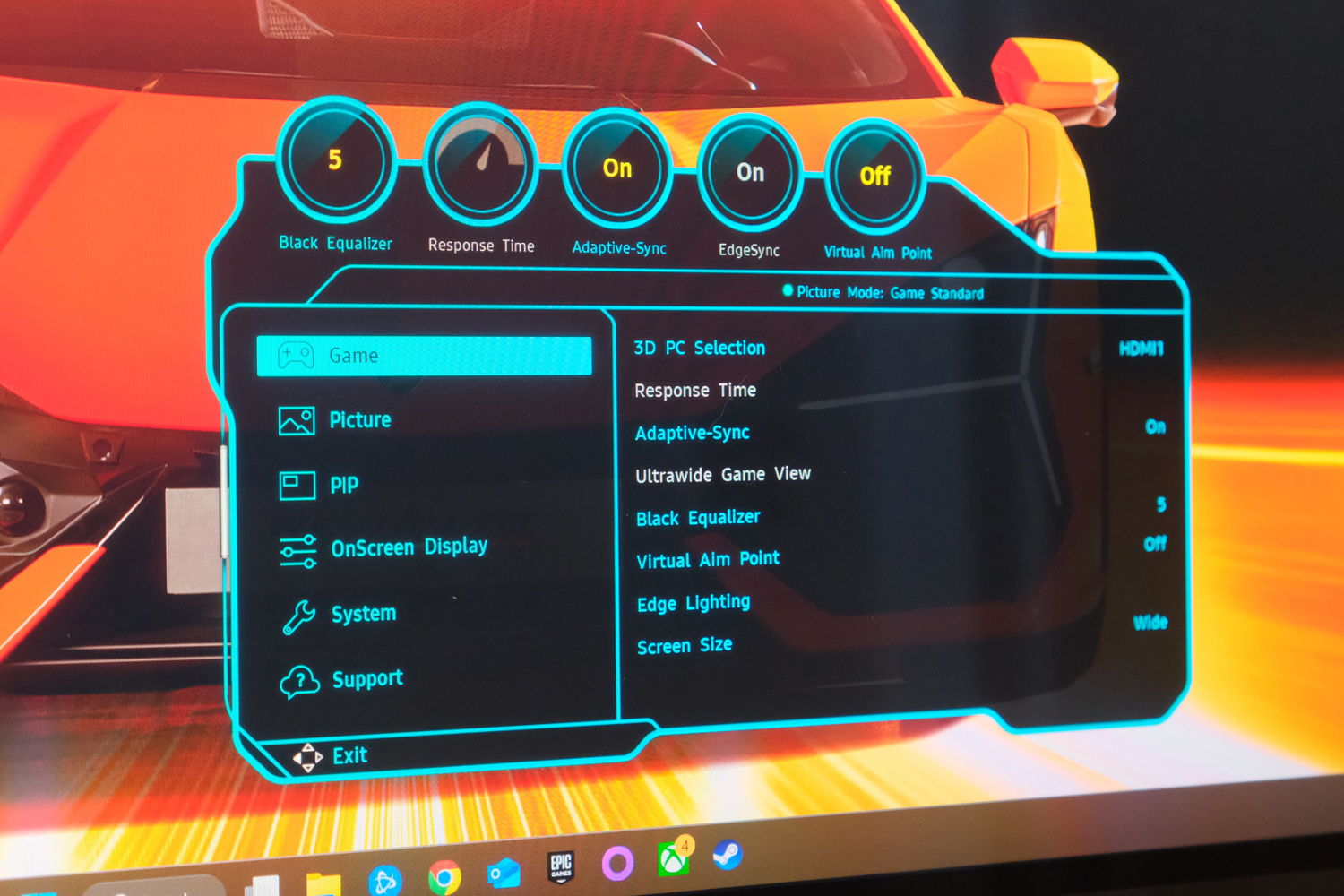
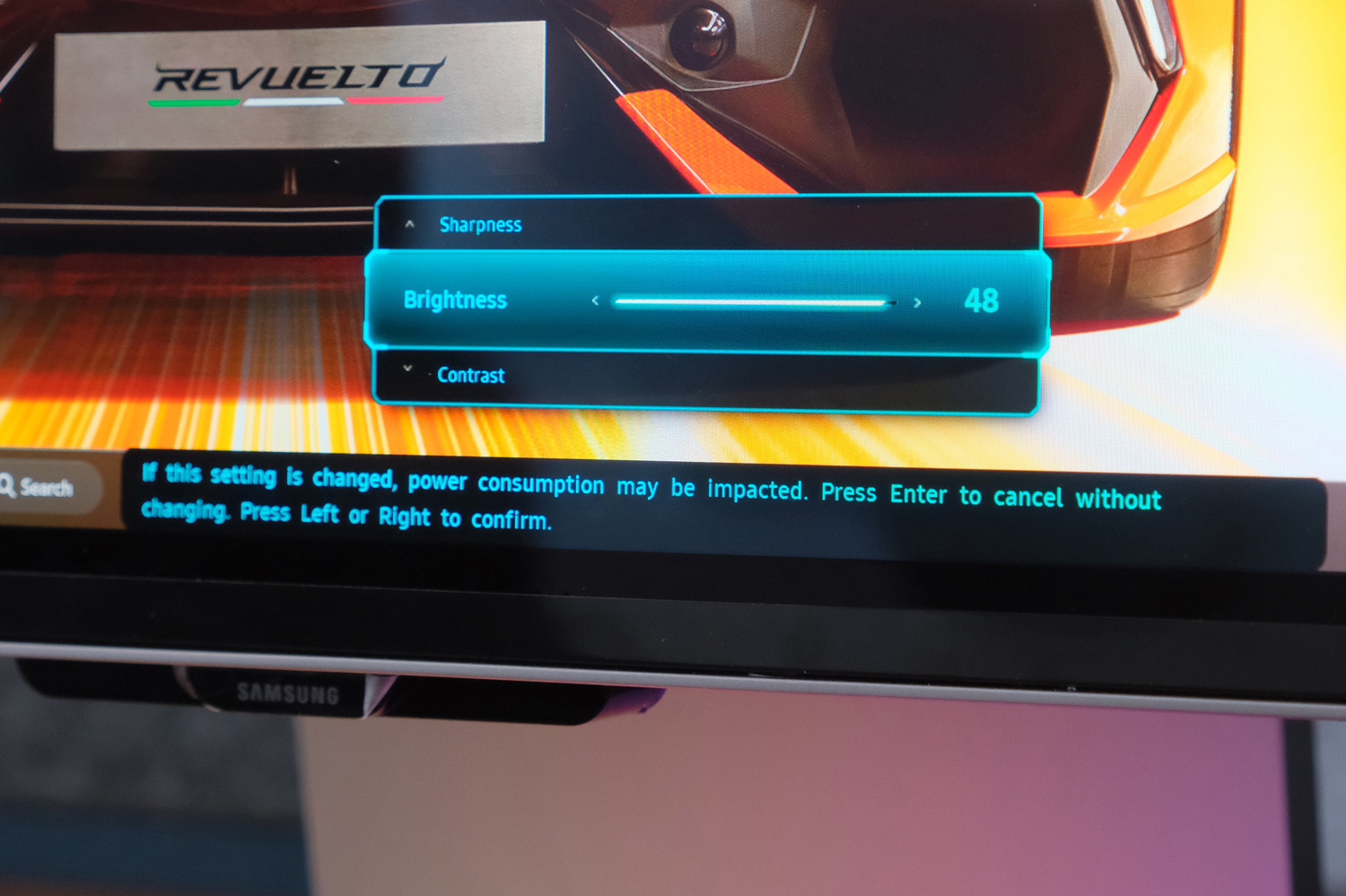
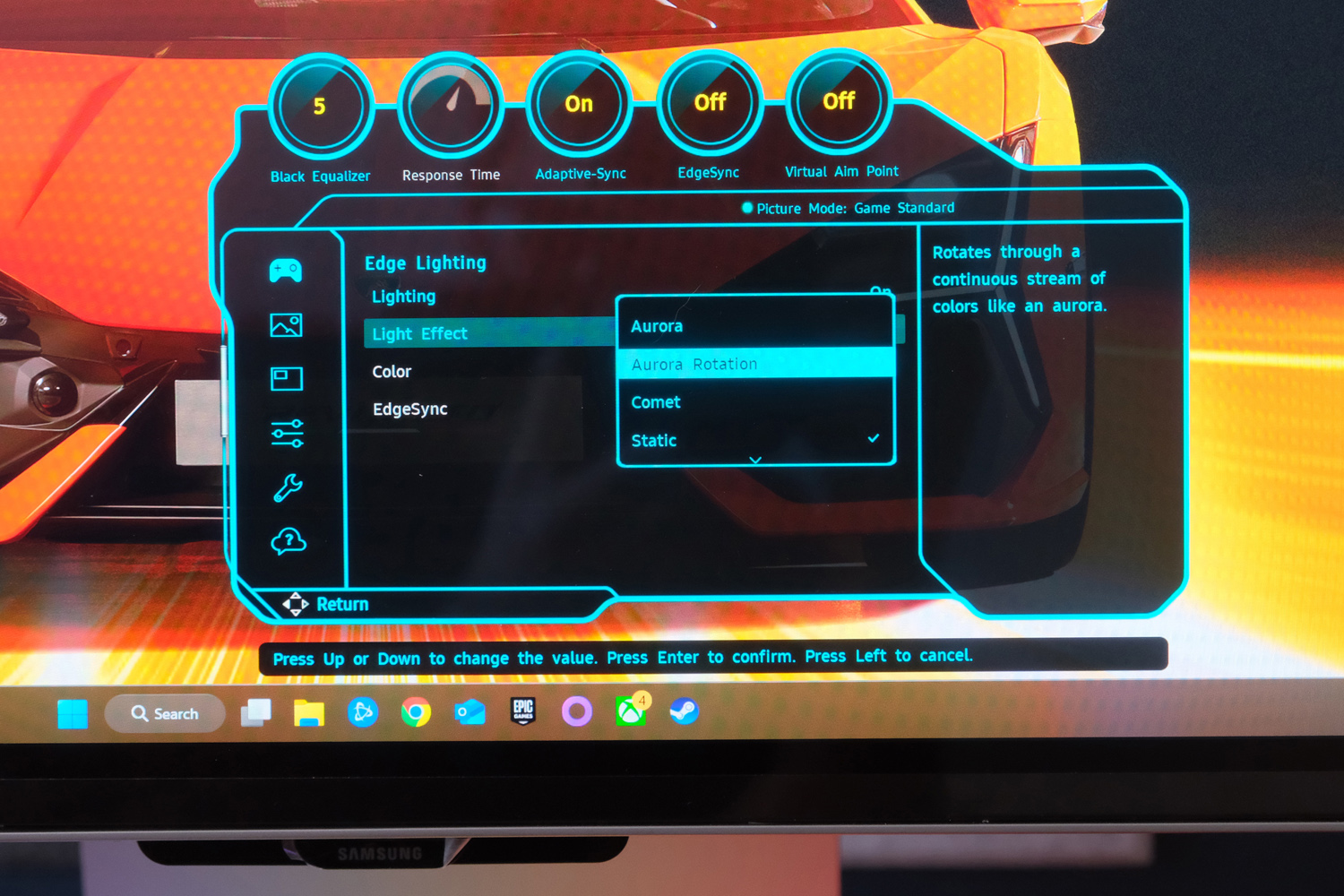
The Odyssey 3D gets Samsung’s familiar onscreen interface, adjusted by a control stick at the back of the screen. It wasn’t nearly as finicky at recognising my inputs as the Odyssey G6 OLED I tested in 2024, and made it easy enough to get around the menus. These don’t eat up the entire screen, so you can see the effect your tweaks have on the image in real-time.
As ever, you can only pick from a few Samsung-approved settings to assign to the control stick’s single quick shortcut, and you get the usual gamer-friendly features like a virtual crosshair and black level booster that automatically lightens the darker parts of the picture to make enemies easier to spot.
There’s only one 3D-related setting found in the OSD – which of the three inputs is 3D-enabled – with everything else handled through Samsung’s Reality Hub software. I’m guessing the intention was to make this a full-screen hub for launching compatible games, à la Steam, but it falls well short. There’s very little to do here short of set the handful of keyboard shortcuts for adjusting the depth effect while you’re playing, and its game scan function refused to add my installed titles it claimed were compatible.
I also found the constantly moving 3D backdrop distracting and dizzying, and it seemed to insist on animating in the background while I was gaming, which can’t be great for system resources. I’d have preferred a simple taskbar toggle or in-game overlay instead.
Picture quality: mind your head
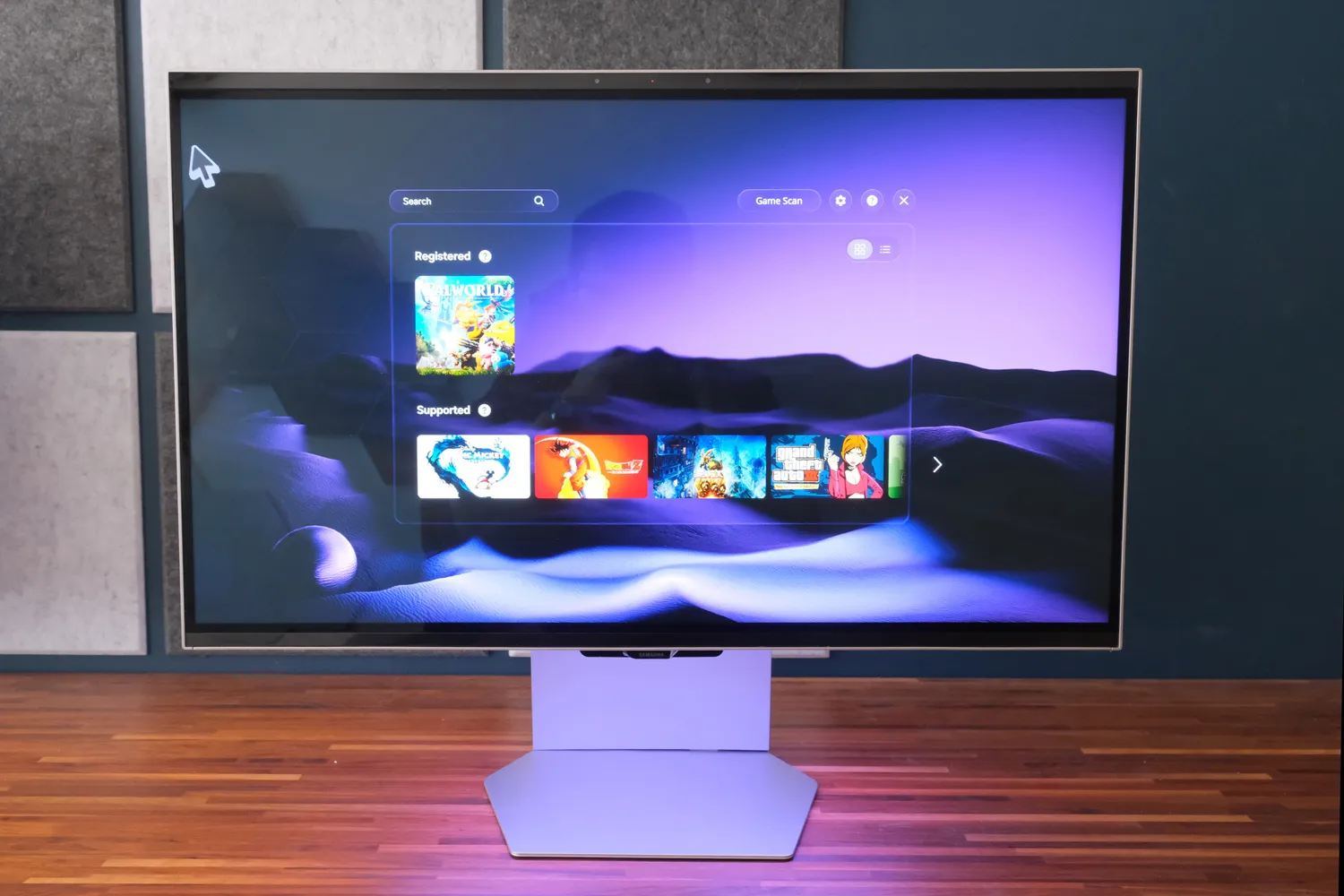
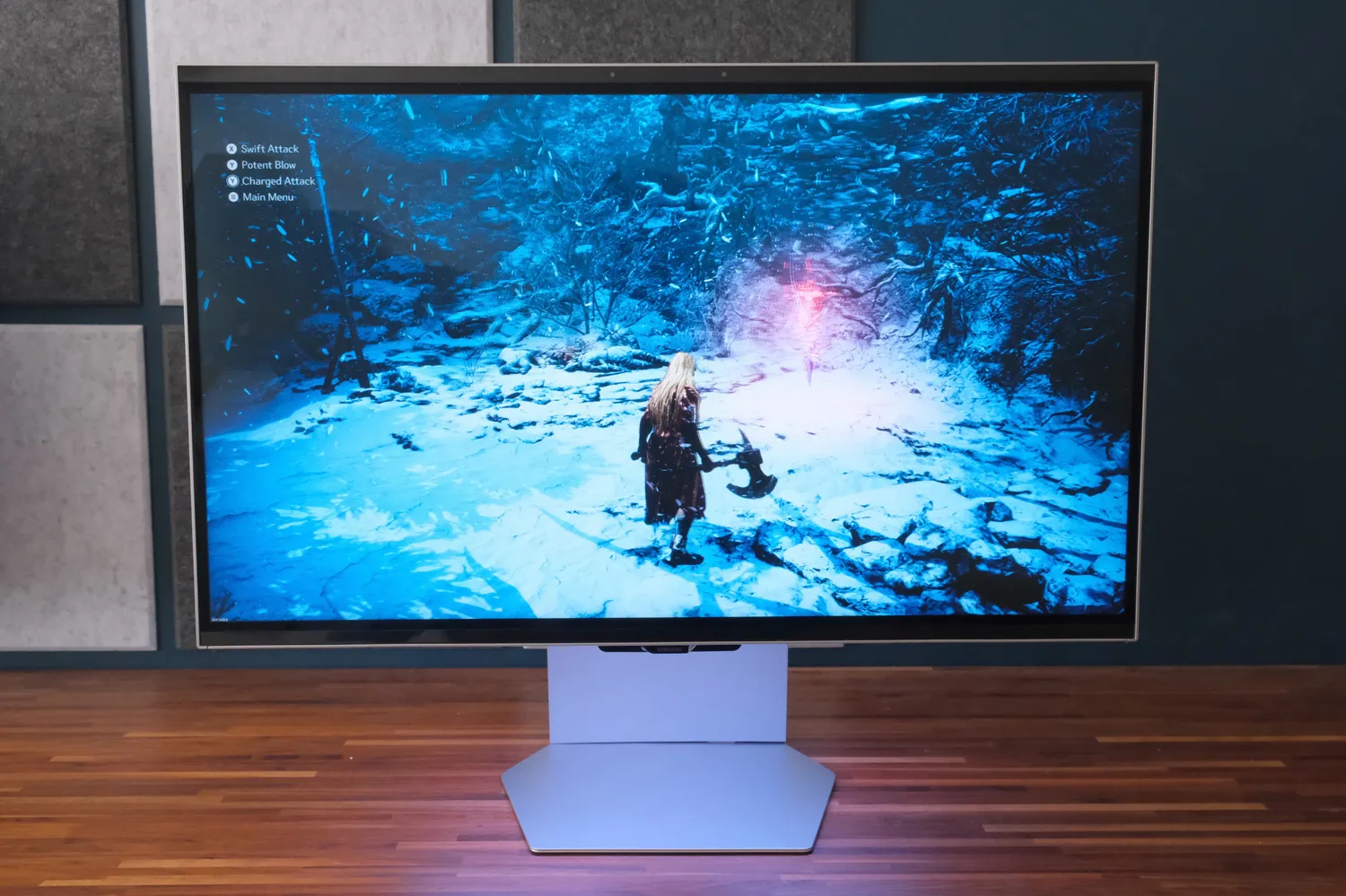
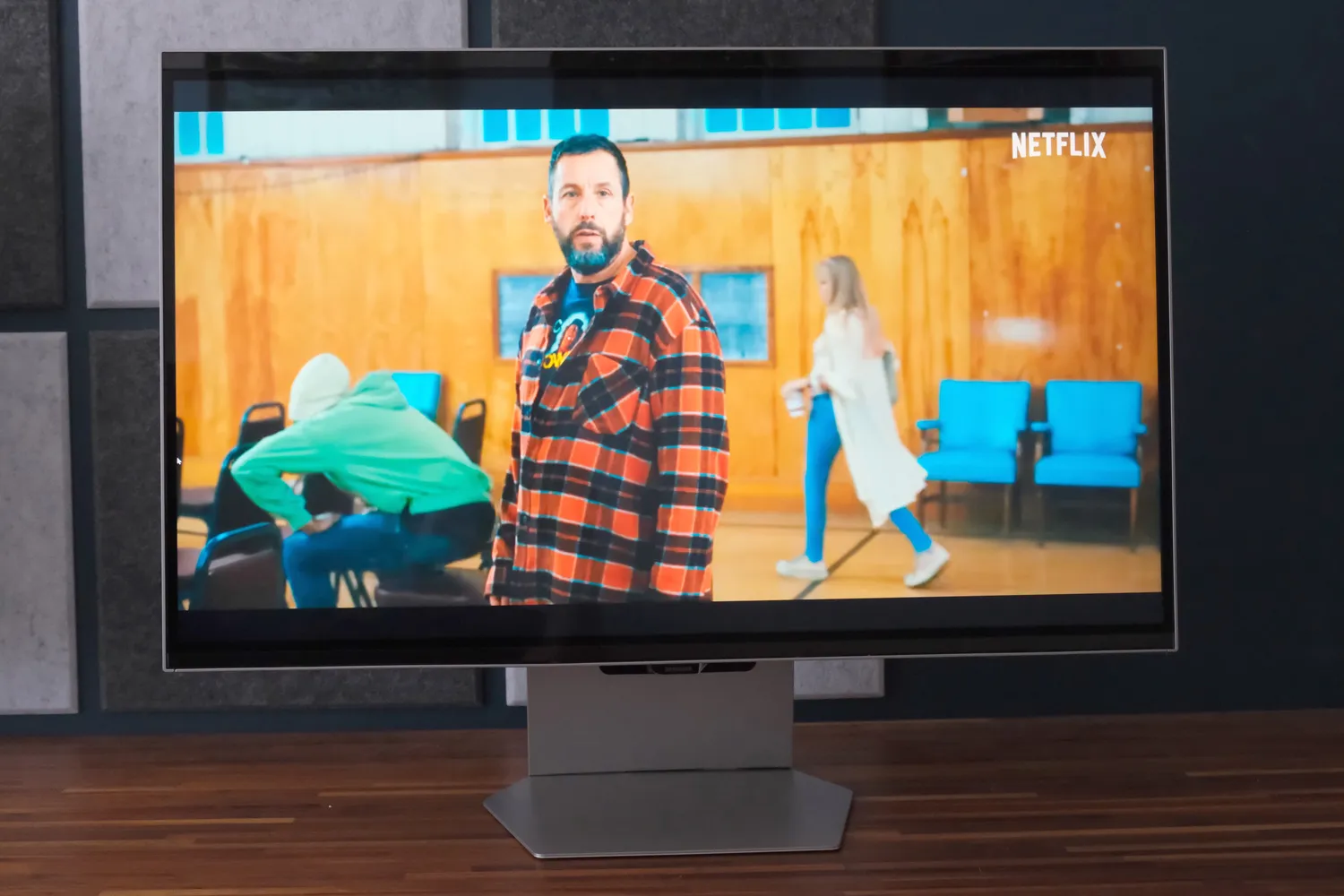
Fair play to Samsung: when the 3D effect kicks in, it just works. The eye tracking is all done in the background, with zero setup beyond installing the Reality Hub software. Launch a compatible title and it’ll switch to lenticular 3D automatically; open a full-screen video and it’ll ask you to pick between 2D upscaled or side-by-side content, but otherwise is left to its own devices. Watching YouTube clips in 3D was great fun, with a real impression of depth.
Moving your head about slowly doesn’t ruin the effect, though faster turns can take a half-second for it to recenter things. Samsung reckons 60cm is a good viewing distance, which I’d agree with; any closer and you’re really noticing the graininess that comes from the lenticular layer. It’s visible with 2D content, too, though I didn’t find it distracting.
My best experience was with The First Berserker: Khazan. This bloody soulslike action game put my character on the foreground plane, while everything else was pushed deeper into the screen. Occasionally an object would enter the foreground, giving an impressive sense of depth. Unfortunately I spotted major motion artifacts around the edges of foreground objects, and the extra demand playing in 3D put on my hardware absolutely tanked my frame rate. Reality Hub won’t let you run at anything other than native 4K resolution, so you’d better have a beefy rig if you want to play with all the details cranked to their highest settings.
Was playing in 3D a transformative experience? No, not even close. The eye tracking wasn’t 100% perfect, so I’d get moments where the two images overlapped, and even when working as intended the picture just looked fuzzier than if I was playing on a regular 2D display. It was enough to take me out of the game, which surely defeats the object of the tech. VR headsets remain the best choice for convincing 3D, because each eye sees a different image without needing to track where you’re looking.
Sticking with 2D content, the Odyssey’s picture quality is as good as I’d expect from Samsung. Colours are vibrant, black levels are decent for an LCD panel, and the 165Hz refresh rate and 1ms grey-to-grey response times are ideal for smooth gaming. Sure, esports pros will probably want more, but they’re unlikely to be interested in the 3D aspect anyway, so are probably shopping elsewhere. It can’t hope to match similarly-priced OLEDs for contrast, though.
Brightness isn’t outstanding, topping out at around 350 nits in SDR mode, and the glossy finish meant light reflections could be troublesome while gaming during the day. That’s doubly true when playing in 3D, as your brain gets confused over which depth you should focus on. Drawing the blinds will be your best bet.
Samsung Odyssey 3D verdict

As much as I’d like glasses-free 3D to finally, finally take off, I don’t think the Odyssey 3D is the monitor to make it happen. Samsung’s software makes you jump through too many hoops, only works properly with certain hardware, and game support is paper-thin at launch. The 3D effect isn’t nearly as clear or convincing as a VR headset, either. Maybe Samsung has the sway to get developers up to speed in double time, but I’d want to see an extensive roadmap before I parted with any cash.
What’s left is a decent enough 27in LCD gaming monitor – but it’s not like those are in short supply. Rivals that stick to 2D cost less than a quarter of the price of the Samsung, making it impossible to recommend to all but the most die-hard of early adopters.
Stuff Says…
Samsung’s new take on glasses-free 3D isn’t quite ready for prime time just yet. Limited game support and wonky 2D upscaling limit the Odyssey 3D’s appeal, and you can get regular 4K IPS gaming monitors for much less.
Pros
Convincing glasses-free 3D images – when the tech works
Clean, responsive and colourful 2D visuals
Decent connectivity options
Cons
Very limited game support
Companion software is basic at best
Don’t need 3D? Rivals cost a whole lot less
Samsung Odyssey 3D technical specifications
| Screen size | 27in, 16:9 |
| Resolution | 3840×2160 |
| Refresh rate | 165Hz (4K), FreeSync/G-Sync/VRR |
| Response time | 1ms |
| Brightness | 350 nits |
| HDR | HDR10 |
| Connectivity | 2x HDMI 2.1, 1x DisplayPort 1.4, 2x USB-A 3.1, 1x USB-B 3.1 |
| Dimensions | 614x542x203mm, 7.5kg (with stand) 614x372x46mm, 4.7kg (panel only) |

